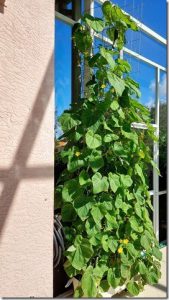By Sarah Bostick and Carol Wyatt-Evens
Gardening in Florida can be incredibly rewarding and incredibly frustrating at the same time. If you are new to the region, you soon learn that gardening in the sunshine state can quickly become a full-time job. Our subtropical climate is perfect for growing an abundance of different vegetables, fruits, and herbs, but the challenges can sometimes be a bit overwhelming.
This is where we can help! Agents from UF/IFAS Extension Sarasota County have partnered to offer a weekly, 30-minute workshop on Zoom to help answer your gardening questions. The first 10 minutes offers an educational component relevant to the urban gardener. The remainder of the time is dedicated to question and answer – any question you have! The series runs through March 2021 with the exception of holidays. You must register for the series on Eventbrite to receive the link to the series. You only need to register once to get access to the entire series:
Every week, the agents will post a question from the webinar that we are sure will be helpful for our community gardeners at large.
This week’s Question of the Week:
Does my lanai receive enough sunlight to grow all the vegetables and herbs I want to grow?
Growing edible plants in your lanai comes with a few unique challenges – all of them manageable with some pre-planning. One of those unique challenges is light. Many lanais are designed to filter and lessen the amount of direct sunlight and that can be a problem for many plants. Most plants derive some of the nutrients and energy they need to survive directly from the soil. But plants have an even greater reliance on what they derive from the sun. Access to sunlight is what drives a crucial process called photosynthesis. Photosynthesis is the process in which plants use sunlight, water, and carbon dioxide to create oxygen and sugars. Those sugars provide the plant with the energy it needs to grow and function.
Think about your own body. A human being cannot survive on a diet of just water and vitamins – we must also consume food, which our bodies metabolize into different types of sugars. These sugars are the fuel that keep our bodies going. With that in mind, think about how a plant feeds itself: it pulls water and vitamins out of the soil through its root system. It creates its own food, in the form of sugars, through its interaction with sunlight. The more sunlight a plant has access to, the greater its ability to produce the sugars that fuel its growth. Turns out we aren’t all that different from plants!
One of the most energy intensive things a plant does during its lifetime is produce fruit. That energy comes from the sugars the plant is producing from sunlight. That means that fruit-producing plants such as tomatoes, eggplant, cucumbers, and squash require much more direct light than plants that are not producing fruits. The larger the fruit, the more energy the plant needs.
So what does all of this mean for growing herbs and veggies on your lanai?

- If your lanai is in shade for much of the day, you will have the best success growing edible plants that do not require as much energy to grow. Some of the edibles that do best with partial shade are parsley, culantro, cilantro, lettuces, salad mixes, arugula, radishes, swiss chard, and kale. Think leafy greens and herbs!
- If your lanai is in full sun all day but made of a material that filters out a lot of sunlight, you can grow the list above plus herbs and veggies such as basil, carrots, beets, turnips, perennial herbs (such as sage, rosemary, oregano, thyme), and edible flowers (such as nasturtiums and marigolds). You can also grow peppers! Believe it or not, peppers are susceptible to sunburn in Florida, so they appreciate filtered full-day sun.
- If your lanai is in full sun most or all of the day and made of a material that filters out very little sunlight, you can grow pretty much everything! If you are interested in growing tomatoes, eggplant, cucumbers, squash, strawberries, or other fruiting crops in your lanai, make sure to place them in the sunniest spot, where they can soak up every bit of sunlight. It is also a great idea to provide tomatoes and cucumbers with a structure to support vertical growth.
The Edible Gardening Series and blog series is a partnership between the following UF/IFAS agents and Sarasota County staff:
- Sarah Bostick, Sustainable Agriculture Agent
- Carol Wyatt-Evens, Chemicals in the Environment Agent
- Mindy Hanak, Community & School Gardens Educator
- Kevin O’Horan, Communications Associate
 0
0
